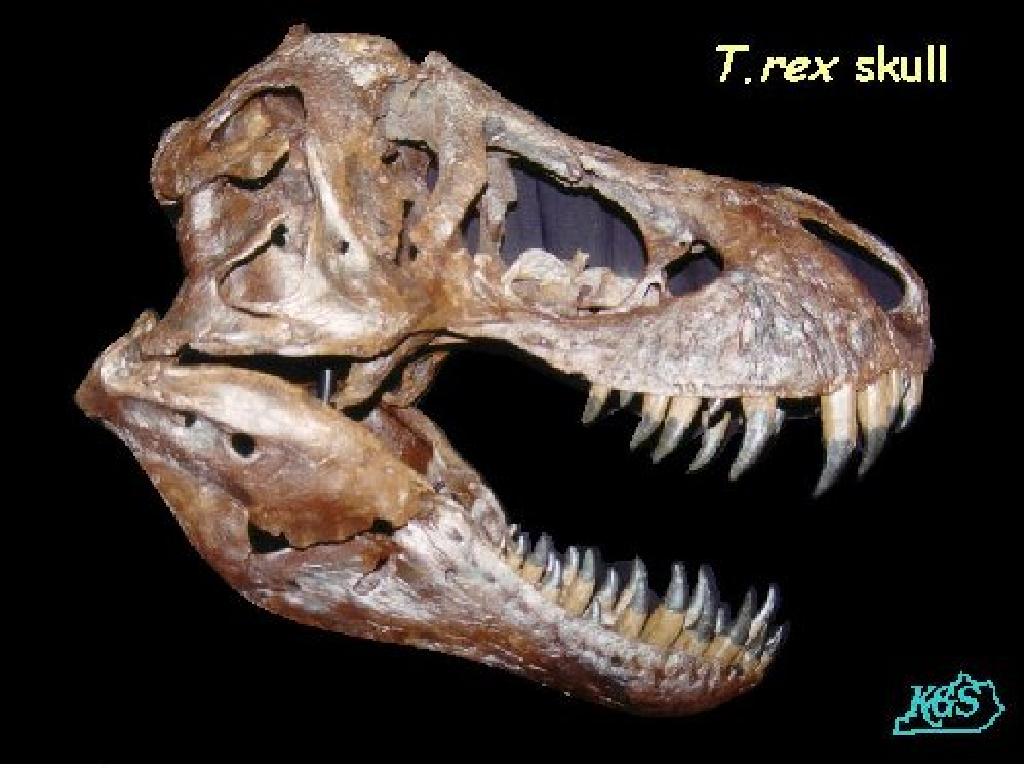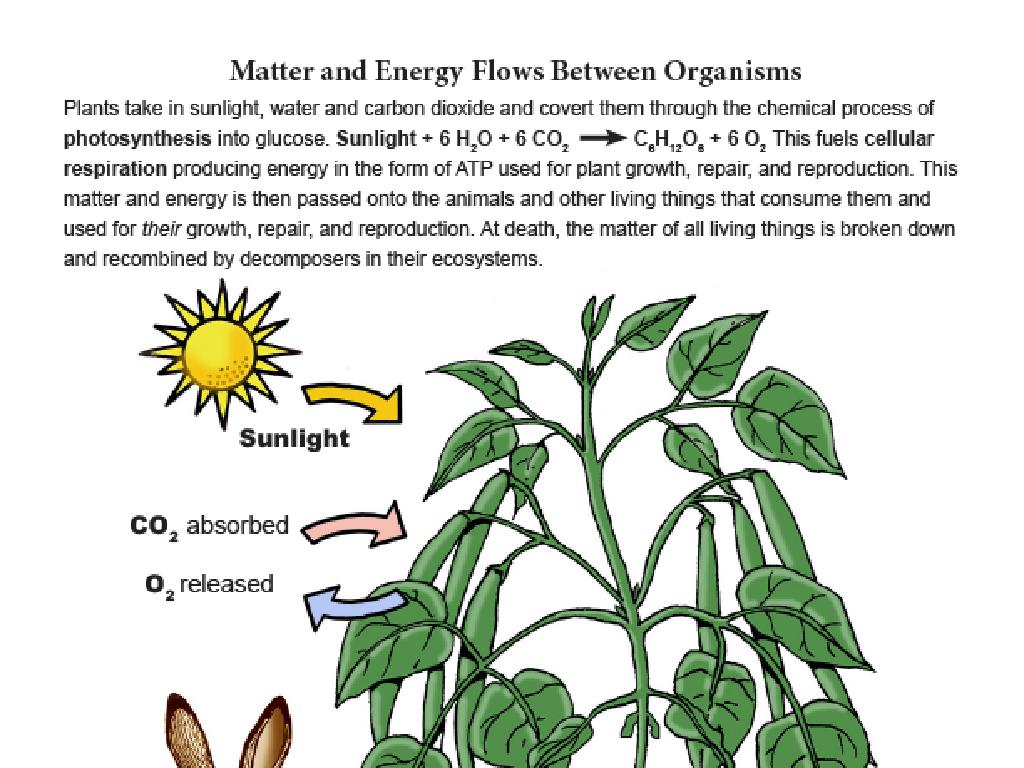Body Systems: Removing Waste
Subject: Science
Grade: Fifth grade
Topic: Animals
Please LOG IN to download the presentation. Access is available to registered users only.
View More Content
Our Body’s Waste Removal Systems
– Why waste removal is key to health
– Removing waste helps prevent illness and keeps the body’s internal environment stable.
– Overview of waste-removing systems
– The excretory system includes organs like kidneys and lungs that help remove different types of waste.
– Kidneys filter blood waste
– Kidneys remove urea, excess salts, and water from the blood, making urine.
– Lungs expel carbon dioxide
– When we breathe out, our lungs remove excess carbon dioxide, a waste gas from our body.
|
This slide introduces the concept of waste removal in the human body, which is crucial for maintaining health and preventing the buildup of harmful substances. Emphasize the role of the excretory system and its components, such as the kidneys and lungs, in filtering and expelling waste. Explain that kidneys are responsible for filtering blood and creating urine, while lungs are involved in gas exchange, removing carbon dioxide from the body. This overview sets the stage for a more detailed exploration of each organ and its function in subsequent lessons. Encourage students to think about how these systems work together to keep them healthy.
Understanding Waste Removal in Our Bodies
– What is bodily waste?
– Waste includes substances the body can’t use, like carbon dioxide and urine.
– Types of waste produced
– Solid waste (feces), liquid waste (urine), and gas (carbon dioxide).
– Importance of waste removal
– Removing waste is crucial to prevent toxin buildup and maintain health.
|
This slide introduces the concept of waste in the context of the human body, explaining that waste is anything that is not useful to our bodies and needs to be expelled. It’s important to highlight the different types of waste our bodies produce, such as solid waste (feces), liquid waste (urine), and gases (like carbon dioxide). Emphasize the importance of waste removal for keeping our body systems healthy and preventing the accumulation of harmful substances. Engage the students by asking them to think of what might happen if waste isn’t removed properly, leading to a discussion on the consequences for our health.
The Excretory System in Animals
– What is the excretory system?
– It’s a body’s way of getting rid of waste
– Main organs involved
– Kidneys filter, ureters transport, bladder stores, urethra expels
– Removing liquid waste
– Kidneys filter blood to create urine, which is sent to the bladder
– Working together for cleanliness
|
This slide introduces the excretory system, a crucial system for maintaining the body’s internal environment by removing liquid waste. Start by explaining the system’s role in waste removal. Highlight the main organs: kidneys (which filter blood to produce urine), ureters (tubes that carry urine from the kidneys to the bladder), the bladder (where urine is stored until it’s expelled), and the urethra (the tube through which urine leaves the body). Discuss how these organs work in concert to keep the body clean and healthy. Use diagrams to illustrate the process and encourage students to ask questions about each organ’s function.
The Digestive System and Waste Removal
– Digestive system eliminates waste
– Breaks down food, absorbs nutrients, and expels the rest.
– Large intestine’s role in waste
– Absorbs water and forms solid waste for expulsion.
– Tracking food waste’s journey
– Food waste travels through the digestive tract to the large intestine.
– Importance of waste removal
|
This slide aims to educate fifth-grade students on the digestive system’s role in waste removal. Begin by explaining how the digestive system breaks down food into nutrients, which the body absorbs, and how the remaining undigested material is considered waste. Emphasize the large intestine’s function in absorbing water from this waste, turning it into solid form, and preparing it for expulsion. Illustrate the journey of food waste through the digestive system, starting from ingestion to excretion. Highlight the importance of this process in keeping the body healthy by removing unwanted substances. Engage students with a simple diagram of the digestive system to visualize the process and encourage questions to ensure understanding.
The Respiratory System: Exhaling Waste
– Respiratory waste removal
– Our body gets rid of gas waste like carbon dioxide when we breathe out.
– Lungs expel carbon dioxide
– When we inhale oxygen, our lungs also work to push out carbon dioxide with each exhale.
– Breathing out as waste removal
– Each time we breathe out, we’re removing unwanted gases from our body, keeping us healthy.
|
This slide aims to explain the process of gaseous waste removal in the respiratory system, specifically focusing on the role of the lungs and the act of breathing. The respiratory system is responsible for taking in oxygen and expelling carbon dioxide, which is a waste product of cellular respiration. The lungs play a crucial role in this process by allowing oxygen to enter the bloodstream and carbon dioxide to be released. Breathing is not just about getting oxygen; it’s also a vital process for waste removal. During the presentation, use diagrams to show how the lungs work and provide examples of how deep breathing can increase waste removal. Encourage students to think about how they feel after exercising and breathing heavily, which is the body’s way of efficiently removing more carbon dioxide.
The Skin and Sweat Glands in Waste Removal
– Skin’s role in excretion
– The skin is part of the excretory system, helping to remove waste.
– Sweat’s function in cooling
– Sweating helps to cool the body down during hot weather or exercise.
– Waste removal via sweat
– Sweat carries waste like salts and urea out of the body.
– Sweat glands’ role
– Sweat glands produce sweat, which surfaces on the skin.
|
This slide introduces the skin and sweat glands as critical components of the excretory system in animals, including humans. The skin is not just for protection; it plays a vital role in excreting waste products through sweat. When we sweat, our body is not only regulating its temperature to prevent overheating but also getting rid of waste substances. The sweat glands are specialized organs that produce sweat, which contains excess salts, urea, and other waste. It’s important for students to understand that sweating is a natural and essential bodily function for maintaining homeostasis and cleanliness. Encourage students to think of times they’ve sweated and discuss how this process helps keep their body in balance.
Keeping Our Systems Healthy
– Maintain a healthy excretory system
– Drink water, limit salt, and exercise regularly
– Stay hydrated every day
– Water helps remove waste from blood
– Eat a balanced diet
– Include fiber, fruits, and vegetables
– Importance of digestive health
– A healthy digestive system aids in efficient waste removal
|
This slide aims to educate students on how to keep their excretory and digestive systems healthy. Emphasize the importance of drinking plenty of water to help the kidneys filter waste from the blood. Discuss how reducing salt intake and regular physical activity can support excretory system health. Highlight the role of a balanced diet rich in fiber, fruits, and vegetables in maintaining a healthy digestive system, which is crucial for the proper elimination of waste. Encourage students to share their own healthy habits and discuss how these contribute to the overall functioning of their body’s waste removal systems.
Class Activity: Waste Removal Relay
– Teams represent body’s waste systems
– Understand how waste is processed
– Learn about kidneys, liver, skin, and lungs
– Relay race to ‘remove waste’
– Winning team processes waste first
|
This activity is designed to teach students about the body’s waste removal systems in a fun and interactive way. Split the class into small groups, each representing a different system: the excretory system (kidneys), the digestive system (liver), the integumentary system (skin), and the respiratory system (lungs). Set up ‘stations’ that represent different parts of the waste removal process. Students will perform tasks at each station that simulate the body’s waste processing functions. The first team to complete all tasks wins. Possible activities include filtering colored water to represent kidney filtration, breathing exercises for the lungs, and a ‘sweat’ relay where they pass water droplets through a maze on their skin. This hands-on approach helps students grasp the concept of waste removal and the importance of different organs in the process.






